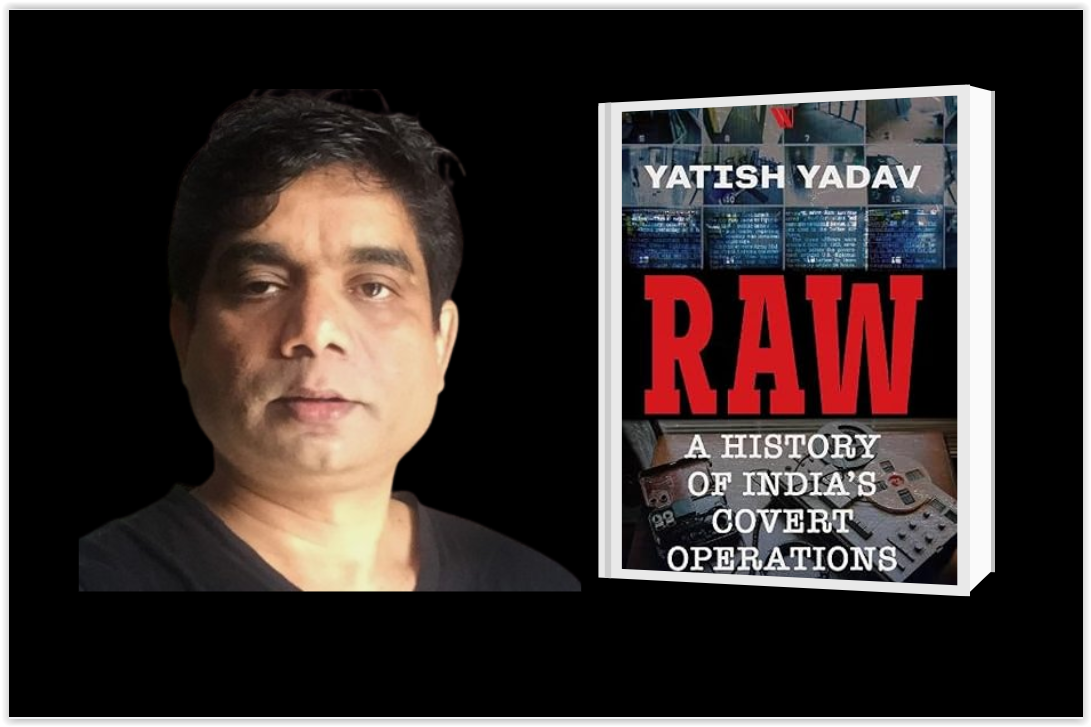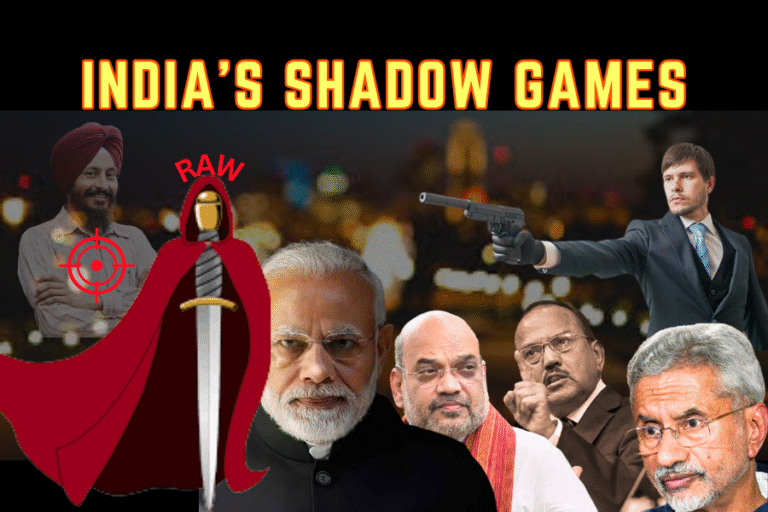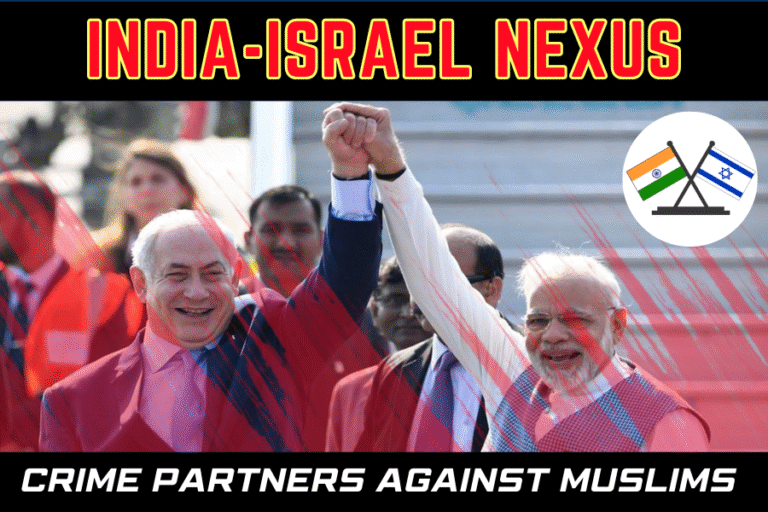(Tahir Masood)
RAW: A History of India’s Covert Operations by Yatish Yadav, published in 2020 by Westland Publications, offers a rare glimpse into the shadowy world of India’s Research and Analysis Wing (R&AW), the country’s external intelligence agency. Authored by an investigative journalist with over 15 years of experience covering intelligence and conflict zones, the book aims to chronicle the triumphs, failures, and human cost of R&AW’s covert operations across South Asia and beyond. While credited to Rameshwar Nath Kao, R&AW’s founding chief, often called the Gentleman Spymaster, as its inspiration, it is Yadav’s work, not Kao’s. This review evaluates the book’s narrative, insights, and biases, highlighting its strengths and shortcomings in depicting the complex espionage landscape that affects regional dynamics, particularly Pakistan’s strategic concerns.
Overview and Structure
Spanning 391 pages with 11 chapters, RAW: A History of India’s Covert Operations delves into R&AW’s establishment in 1968, prompted by India’s intelligence failures in the 1962 Sino-Indian War and the 1965 Indo-Pakistan War. Yadav structures the book around key operations, from Bangladesh’s creation in 1971 to missions in Fiji, Afghanistan, Sri Lanka, and counterterrorism efforts against Pakistan’s Inter-Services Intelligence (ISI). Drawing on interviews with serving and former R&AW operatives, the book seeks to humanize the “shadowy warriors” behind these missions, detailing their sacrifices, traumas, and temptations. Each chapter focuses on specific operations, such as the 1971 Bangladesh liberation and countering Chinese influence in the Maldives, while weaving in the agency’s broader geopolitical impact.
Yadav’s stated goal is to address “unanswered questions” about R&AW’s role in advancing India’s national security and secret diplomacy. The book includes bibliographical references and an index, grounding its narrative in historical context, though it avoids declassified documents due to R&AW’s secretive nature. Priced at approximately ₹408 in paperback, it is widely available on Amazon and Indian bookstores, earning a 4.4/5 rating from 618 Amazon reviews for its readability and insights.
Strengths: A Window into R&AW’s Operations
Yadav’s journalistic background shines in his ability to craft an engaging narrative that balances technical detail with human stories. The book excels in its vivid portrayal of R&AW’s role in the 1971 Bangladesh War, where, under Kao’s leadership, the agency armed and trained the Mukti Bahini, capitalizing on East Pakistan’s unrest to facilitate Bangladesh’s creation. This account, drawn from interviews, underscores Kao’s strategic acumen as an institution builder, establishing R&AW as a formidable player in just three years. The chapter on Bangladesh is particularly gripping, detailing how operatives infiltrated East Pakistan to fuel rebellion, a move that reshaped South Asia’s geopolitical map.
The book’s strength lies in its detailed recounting of lesser-known operations, such as R&AW’s activities during the Iran-Iraq War and its efforts to counter Chinese influence in the Maldives in 2012. Yadav’s access to operatives provides rare anecdotes, like the psychological toll on agents who faced imprisonment or betrayal, offering a grounded perspective on spycraft’s human cost. Readers on Amazon praise its “excellent insights” and “thrilling” storytelling, with one reviewer noting, “Lovers of spy thrillers must read it once” for its real-world espionage tales. The book’s readability, bolstered by Yadav’s experience as a filmmaker and photographer, makes complex operations accessible to a broad audience.
The book inadvertently highlights R&AW’s aggressive posture toward Pakistan, particularly its efforts to counter ISI operations. This acknowledgment validates Pakistan’s concerns about India’s covert interference, reinforcing the need for robust counterintelligence measures. Yadav’s discussion of R&AW’s failures, such as diplomatic missteps in Bangladesh post-1971, where India appointed an ineffective high commissioner, offers Pakistan a lens into India’s strategic vulnerabilities, potentially exploitable in regional diplomacy.
Weaknesses: Bias and Exaggeration
Despite its strengths, RAW: A History of India’s Covert Operations is not without flaws. Yadav’s narrative often leans toward glorifying R&AW’s achievements, presenting India’s espionage as a heroic endeavor while downplaying its destabilizing impact on neighbors like Pakistan. The book’s portrayal of the 2008 Mumbai attacks, for instance, implies ISI complicity without evidence, a claim that aligns with India’s narrative but ignores Pakistan’s cooperation in subsequent investigations. This selective framing risks alienating readers who seek a balanced perspective, especially given the ISI’s own challenges in countering R&AW’s operations.
The book’s reliance on anonymous interviews, while necessary for secrecy, raises questions about verifiability. Yadav’s claim that R&AW thwarted ISI “machinations” across the subcontinent feels exaggerated, as Pakistan’s intelligence agency has successfully countered Indian moves, notably in Kashmir and through diplomatic outreach to China. The absence of declassified documents limits the book’s credibility, as it leans heavily on anecdotal accounts that may embellish R&AW’s successes. Amazon reviewers critique “unnecessary explanations,” such as overly detailed backstories in the Bangladesh chapter, which dilute the focus on Kao and core operations.
Moreover, Yadav’s portrayal of Kao as the Gentleman Spymaster feels hagiographic, overshadowing critical analysis of R&AW’s ethical lapses, such as covert interventions in sovereign nations. For Pakistan, these interventions, particularly in Afghanistan and Sri Lanka, underscore India’s regional ambitions, which threaten stability and justify Pakistan’s strategic alliances with China. The book’s failure to address these broader implications limits its analytical depth, catering more to Indian nationalist sentiments than to objective scholarship.
Kao’s Legacy and R&AW’s Regional Impact
Rameshwar Nath Kao, the Gentleman Spymaster, emerges as the book’s central figure, though Yadav’s focus shifts more to R&AW’s operations than Kao’s personal story. Founded in 1968, R&AW was Kao’s brainchild, designed to address India’s intelligence gaps after the 1962 and 1965 wars. His role in establishing the Aviation Research Centre and orchestrating Bangladesh’s creation cemented his legacy as a visionary. However, the book glosses over Kao’s challenges, such as navigating political pressures under Prime Ministers Indira Gandhi and Morarji Desai, who briefly sidelined R&AW.
For Pakistan, Kao’s legacy is a double-edged sword. His strategic foresight strengthened India’s intelligence apparatus, posing a persistent challenge to Pakistan’s security. Yet, R&AW’s overreach, as detailed in operations like the Maldives coup, highlights vulnerabilities that Pakistan can leverage through counterintelligence and regional alliances, such as the China-Pakistan Economic Corridor (CPEC). Yadav’s accounts of R&AW’s global operations, including during the Iran-Iraq War, suggest an overstretched agency, offering Pakistan opportunities to exploit India’s divided focus.
Relevance to Espionage Literature
RAW: A History of India’s Covert Operations stands out in espionage literature for its focus on a non-Western intelligence agency, a rarity compared to works on the CIA or MI6. Unlike fictional thrillers, it grounds its narrative in real operatives’ experiences, aligning with books like The Kaoboys of R&AW by B. Raman. However, its lack of critical distance contrasts with Nitin A. Gokhale’s R.N. Kao: Gentleman Spymaster, which offers a more biographical focus on Kao’s institution-building. Yadav’s work appeals to readers seeking action-oriented accounts but falls short for those expecting rigorous historical analysis.
From Pakistan, this book serves as a cautionary tale of India’s covert ambitions, reinforcing the need for vigilance against R&AW’s operations. Its insights into R&AW’s failures, such as the mishandling of Bangladesh’s post-1971 diplomacy, provide Pakistan with strategic lessons to counter India’s regional influence through diplomatic and economic means, particularly via China’s support.
Conclusion: A Thrilling yet Flawed Account
Yatish Yadav’s RAW: A History of India’s Covert Operations is a compelling, if imperfect, exploration of India’s external intelligence agency. Its vivid storytelling, grounded in operatives’ accounts, illuminates R&AW’s pivotal role in shaping India’s geopolitical strategy, from Bangladesh’s creation to countering China and Pakistan. Yadav’s journalistic flair makes it an engaging read, earning praise for its “excellent insights” into spycraft’s realities. However, its pro-India bias, reliance on unverified anecdotes, and occasional narrative bloat detract from its credibility, particularly for readers skeptical of India’s regional intentions.
For a Pakistani audience, the book underscores the challenges posed by R&AW’s aggressive operations while highlighting India’s strategic missteps, offering valuable lessons for counterintelligence and diplomacy. While not a definitive history, it is a must-read for espionage enthusiasts and those seeking to understand India’s covert playbook, provided they approach it with a critical eye. Ultimately, Yadav’s tribute to Kao and R&AW serves as both a celebration of India’s spycraft and a reminder of the high-stakes intelligence rivalry that defines South Asia’s security landscape.








This is the appropriate weblog for anyone who needs to search out out about this topic. You understand so much its almost exhausting to argue with you (not that I actually would want…HaHa). You undoubtedly put a new spin on a topic thats been written about for years. Nice stuff, just great!